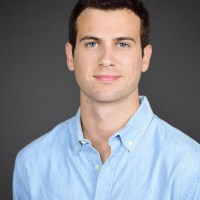The solutions to Hollywood VFX problems may arrive sooner rather than later. Today, Chaos released Ray Tracing FTW, a short film about VFX and filmmaking from the artist’s point of view. The comedic short highlights Project Arena, an emerging virtual production toolset.
Inspired by Westerns like Butch Cassidy and the Sundance Kid and Once Upon a Time in the West, Ray Tracing FTW is a showcase for Project Arena, which offers a faster and more efficient solution to game engines. These ready-to-use tools will allow artists, directors, and DPs to see more in-cameras without distraction. With Project Arena, there will be no need for virtual art departments because users can move V-Ray assets and select animations to LED walls in around 10 minutes. Plus, VFX artists can use these same assets from pre-production to post-production without a drop in quality.
“Technology is too often a distraction on set. It crashes, doesn’t respond fast enough, or requires too many specialists to make it work right,” said Christopher Nichols, director of special projects at the Chaos Innovation Lab and VFX supervisor/producer of Ray Tracing FTW. “We’ve been developing Project Arena to change all that, so everyone from the artist to the DP can stop thinking about the technology, and just get back to the natural rhythms of filmmaking.”
Ray Tracing FTW was created by cinematographer Richard Cudo, James Blevins, and other VFX artists who worked on high-profile productions like The Mandalorian and Dune: Part Two. The short film is a love letter to cinema and VFX, as it explains how great movies are being held back by a lack of real-time tools. Because of the many Easter eggs littered throughout Ray Tracing FTW, there is a checklist that details every reference and gag you might have missed.
In simplest terms, Project Arena wants to save time during production. Ray Tracing FTW only took three days, while a normal virtual production shoot would take four.
“I was shooting predominantly in an LED volume and I was continually blown away by how genuine the results looked — even to the naked eye. It was so clear how much quicker and more efficient Project Arena made the compositing process, which enabled a much more aggressive sense of creativity in the photography,” said Richard Crudo, six-term former president of the American Society of Cinematographers and director of photography on Ray Tracing FTW.
To learn more, contact the Chaos Innovation Lab via the form on the Project Arena page.




